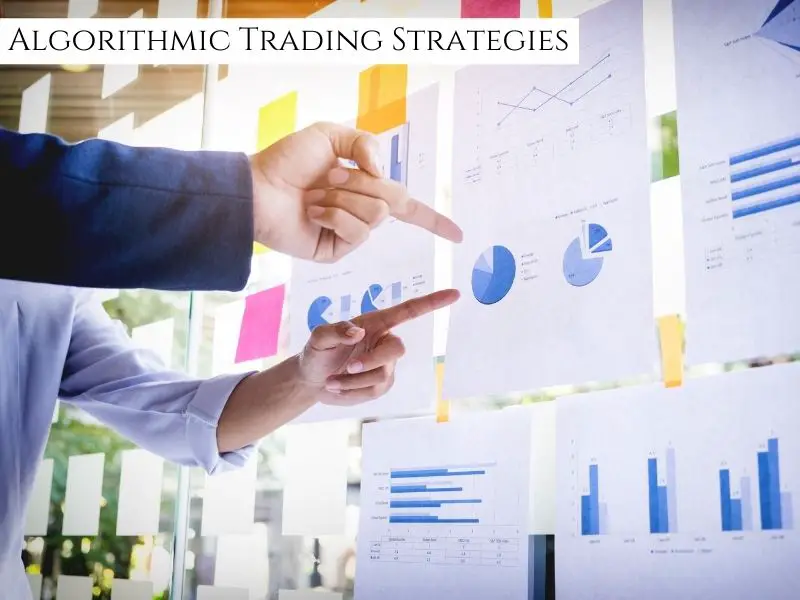Algorithmic trading involves placing a deal using a computer programme that follows a set of instructions (an algorithm). In theory, the deal can make profits at a pace and frequency that would be hard for a human trader to achieve.
The sets of instructions are defined by timing, price, quantity, or any mathematical model. Algo-trading, in addition to giving profit opportunities for traders, makes markets more liquid and trading more systematically by removing the impact of human emotions on trading.
Any algorithmic trading strategy necessitates the identification of a favourable opportunity in terms of increased revenues or cost reduction. Below mentioned are some of the common algo-trading strategies:-
1. Trend-following Strategies:-
The most typical algorithmic trading approaches employ moving averages, channel breakouts, price level variations, and other technical indicators.
Because these methods do not require any predictions or price forecasts, they are the easiest and simplest to implement using algorithmic trading
2. Arbitrage Opportunities:-
A risk-free profit or arbitrage opportunity can be made by purchasing a dual-listed stock at a low price in one market and then after that selling it at a much higher price in different or another market.
Because price differentials actually happen from time to time, the identical technique can be performed for stocks vs. futures products.
3. Index Fund Rebalancing:-
To bring their holdings up to par with their respective benchmark indexes, index funds have set rebalancing periods.
This generates attractive opportunities for algorithmic traders, who earn from projected trades that yield 20 to 80 basis points profits right before index fund rebalancing, depending on the number of stocks in the index fund.
For timely execution and the best prices,
such deals are initiated using algorithmic trading algorithms.4. Mathematical Model-based Strategies:-
Trading on a mix of options and the underlying security is possible thanks to mathematical models like the delta-neutral trading technique.
(A delta neutral portfolio strategy consists of numerous holdings with offsetting positive and negative deltas—a ratio comparing the change in the price of an asset, usually a marketable security, to the equivalent change in the price of its derivative—so that the assets' overall delta is zero.)
5. Trading Range (Mean Reversion):-
The notion behind a mean reversion approach is that an asset's high and low values are a transient occurrence that reverts to its mean value (average value) on a regular basis.
Identifying and defining a price range, as well as designing an algorithm based on it, allows transactions to be executed automatically when an asset's price moves inside or outside of its stated range.
6. Volume weighted Average Price (VWAP):-
Using stock-specific historical volume profiles, the volume-weighted average pricing technique splits up a large order and releases dynamically determined smaller parts of the order to the market. The goal is to fill the order as near to the volume-weighted average pricing (VWAP).
7. Time Weighted Average Price (TWAP):-
Using evenly divided time intervals between a start and finish time, the time-weighted average pricing technique breaks up or segregates a large order and releases dynamically constructed smaller parts of the order to the market.
The goal is to execute the order as close to the average price between the start and end timings as possible in order to minimise market impact.
8. Percentage of Volume (POV):-
This algorithm continues sending partial orders until the trade order is entirely filled, based on the defined participation ratio and the volume transacted in the marketplaces.
When stock price reaches user-defined levels, the corresponding “steps strategy” sends orders at a user-defined percentage of market volumes and raises or decreases this participation rate.
9. Implementation Shortfall:-
The implementation shortfall technique tries to reduce an order's execution cost by trading off the real-time market, saving money on the order and taking advantage of the opportunity cost of delayed execution.
The technique will enhance the desired participation rate when the stock price moves in a positive way and decrease it when the stock price moves in a negative direction.
10. Beyond the Usual Trading Algorithms:-
There are a few different types of algorithms that try to find “happenings” on the other side. These “sniffing algorithms,” which may be deployed by a sell-side market maker, have the intelligence to detect any algorithms on the buy side of a huge order.
Such algorithmic identification will assist market makers in identifying huge order possibilities and allowing them to profit by filling the orders at a higher price.
This is referred to as “high-tech front-running.” Front-running is generally deemed unlawful, depending on the circumstances, and is strictly controlled by FINRA (Financial Industry Regulatory Authority).
Conclusion
Trading decisions based on pre-set rules programmed into a computer are known as algorithmic trading techniques. When specific criteria are met, a trader or investor writes code that conducts trades on his or her behalf. Above points are some basic strategies which can be used for Algorithmic Trading.






